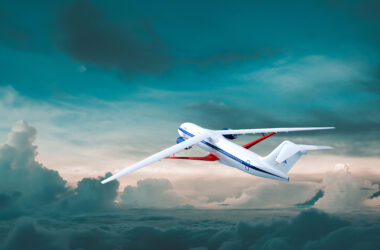In pursuing more sustainable aviation, NASA has developed a small-scale, fully operational jet engine named DART.
Hidden away in a high-tech laboratory at NASA’s Glenn Research Center in Cleveland, this unassuming powerhouse might well revolutionize how we approach aircraft engine research and development.
What is DART?
DART, short for DGEN380 Aero-Propulsion Research Turbofan, is a miniature jet engine that measures just 4.3 feet (1.3 meters) in length—about half the size of engines typically found on single-aisle commercial airliners.

The engine is developed by the French company Price Induction (now known as Akira), DART was acquired by NASA in 2017 to bolster its sustainable aviation technology research efforts.
Despite its size, DART boasts a fully functional turbofan design with a high bypass ratio that allows for greater fuel efficiency compared to other jet engines. This unique combination of compact size and advanced features makes DART an ideal testbed for exploring cutting-edge propulsion technologies.
Since its acquisition, DART has played a crucial role in several key NASA research activities focused on jet engines. In the past, researchers utilized the small-scale engine to investigate the incorporation of noise-reducing materials, which could potentially lead to the development of quieter next-generation airliners.
Looking ahead, NASA plans to leverage DART’s capabilities to explore innovative ideas that could contribute to creating ultra-efficient airliners for use in the 2030s and beyond. If these technologies prove successful during testing with DART, they may graduate to more extensive evaluations involving larger facilities, such as NASA’s wind tunnels.

One of the most significant advantages of using a small-scale jet engine like DART is its cost-effectiveness and accessibility. The modest size of the engine and its relatively simple test stand allow researchers and engineers to experiment with newly designed engine components at a fraction of the cost associated with full-scale jet engine test rigs.
DART’s compact nature provides unparalleled flexibility in testing various engine elements, from noise-reducing materials and fuel-efficient propulsion methods to advanced coatings, sensors, and instrumentation.
This versatility enables NASA to explore a broader range of innovative technologies, increasing the likelihood of breakthrough discoveries.
Potential Impact on the Aviation Industry The research conducted using DART has far-reaching implications for the future of the aviation industry.
The advancements in engine technology and materials through DART testing could significantly improve aircraft performance, reliability, and maintenance requirements. These developments have the potential to revolutionize the aviation sector, making air travel more eco-friendly and cost-effective for both airlines and passengers.
While DART is part of NASA’s wider efforts exploring sustainable aviation the engine does look promising. As Dan Sutliff, the coordinator of DART research at NASA Glenn explains, “technologies that work well here have a greater chance of achieving successful inclusion on future aircraft engines. The test rig helps NASA save resources and contribute to protecting our environment.
TLDR:
- DART is a small-scale, fully operational jet engine used by NASA for sustainable aviation research
- The engine’s compact size and advanced features make it an ideal testbed for new technologies
- DART has been used to investigate noise-reducing materials and fuel-efficient propulsion methods
- Using a small-scale engine like DART is cost-effective and provides flexibility in testing
- Research conducted with DART could lead to quieter, more fuel-efficient airliners in the future







